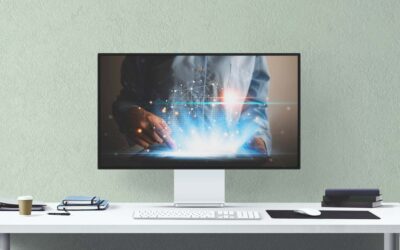Working Your Museum’s Problems to Find Solutions

Rachael Cristine Woody
Museums know they need money, but they’re often so overwhelmed they can’t put ideas on paper. While it may seem counter-intuitive to focus on your problems, this is exactly what I recommend to museums.
This thought exercise is particularly helpful to the grant application process. Stating the problem, identifying what you need and why, and describing how you intend to solve the problem should be done articulately, clearly and concisely.
If you plan to do this exercise with staff, I recommend first stating the intention of the exercise: to get creative and strategic about solutions. Caution against delving too deeply into the negativity that can emerge when focusing on our problems. In addition, cultivate a safe space to explore problems, and commit to your staff that there will be no judgement or repercussions for sharing their thoughts.
Start with listing all the museum’s problems—specifically, problems that would be alleviated if the museum had more funding. I recommend listing all of them on a white board and let it flow without censorship. You may notice that many of the problems will coalesce into groupings; this is an indicator that these problems are ripe for solution development.
Next, outline needs each problem represents. This can be as simple as:
- Problem: We don’t have enough staff to meet our mission, projects, commitments, objectives, etc.
- Need: More staff.
Or, it can be more nuanced:
- Problem: Stakeholders are disgruntled because we have nothing online.
- Need: Digitization equipment, a collections management system, staff, and training are needed before we can put things online.
If you’re doing this exercise because the museum intends to apply for grants in the future, there’s a further benefit. Going through this exercise will provide a way to systematically identify all needs that must be addressed in order for the museum to function at a healthy capacity. If museums aren’t comprehensive in identifying and detailing needs in the grant proposal, the granting agencies will wonder if the museum has a full grasp of the problem set and what it will take to solve it.
Now it’s time to find solutions for those needs. A multi-faceted approach may be required, as is the case with the “We have nothing online” problem. The need in this case is: ‘digitization equipment, a collections management system, staff, and training’. A solution would be to apply for a grant that could supply technology and money for temporary professional staff to digitize a discrete portion of the collection, catalog it, and publish the newly digitized collection online.
You may have noticed that identifying needs and their solutions can address multiple problems. Pick the problems with the greatest synergy of needs and solutions and outline them. Some preferred methods of doing this include using a linear grid format, or a more visual mapping exercise. Whichever you choose, you’ll need it for the next step in this process, which is The Solution Break Down, as well as for when you’re ready to begin filling in the grant proposal.
Though this exercise can seem daunting, the more museums become comfortable working their problems to find a solution, the more easily good ideas will flow. In fact, this is an exercise I recommend museums consider as an annual check-in to help anticipate a problem before it metastasizes. In doing so, museums can identify what types of resources are needed and strategize possible solutions to address the problem before it becomes a PROBLEM.
Remember: Problems are vehicles to express needs. When needs are listened to we find possible solutions. When solutions are found, we have the power to break out of the overwhelm and solve our own problems.

Rachael Cristine Woody
Stan writes regularly for Lucidea’s Think Clearly blog. Subscribe to ensure you never miss a post with engaging information for KM practitioners and special librarians! Learn about Lucidea’s Presto, SydneyDigital, and GeniePlus software with unrivaled KM capabilities that enable successful knowledge curation and sharing.
Similar Posts
No-Code Digital Storytelling Example: Rembrandt’s Self-Portrait at Kenwood House
Explore how English Heritage’s Kenwood House uses the no-code platform Shorthand to bring Rembrandt’s Self-Portrait with Two Circles to life through visual storytelling and interactive design.
Exploring No-Code Digital Storytelling: Hoover’s “Fanning the Flames” Exhibit
Explore no-code digital storytelling with Hoover’s ‘Fanning the Flames’ exhibit. See how interactive tools (Deep Zoom Color Compare & Hot Spot) enhance user engagement and the visual experience.
An Introduction to Scrollytelling for Museums
Discover how museums use scrollytelling and digital storytelling platforms to create immersive narratives. This introduction explores key concepts and approaches to interactive storytelling.
Exploring Self-Determinate Multiple Pathways: An Example of Digital Storytelling
Discover how self-determinate multiple pathways offer flexible interactive storytelling in museum exhibits. Learn from the Tenement Museum’s ‘Your Story Our Story.’





